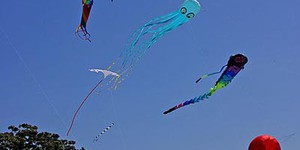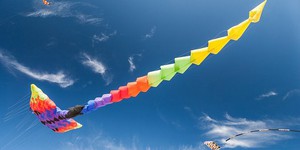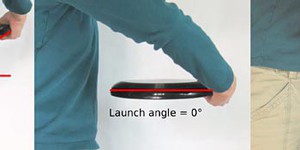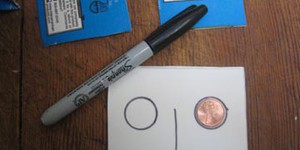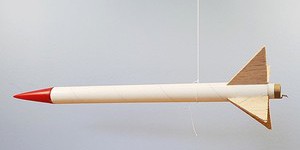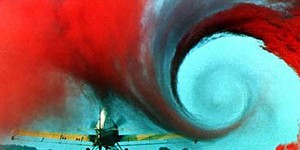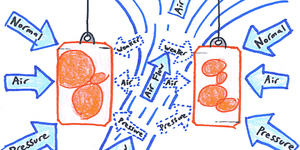Others Like “The Wright Stuff: Using Kites to Study Aerodynamics” (top 20 results)
|
Kites have been a source of entertainment for centuries for kids from cultures around the world. In this science project you will have a chance to build your very own kite, a simple sled kite. Then you will use it to investigate how kites fly. Will you find out the best way to fly your kite?
Read more
Have you ever flown in an airplane, or looked up at one flying in the sky, and wondered how such a massive machine can stay in the air? Airplanes can stay in the air because their wings, also referred to as airfoils, generate lift. Engineers use devices called wind tunnels to experiment and test different wing shapes when they design new airplanes. Wind tunnels let engineers make careful measurements of the air flow around the wing, and measure the amount of lift it generates.
If you can get…
Read more
Flying kites is an excellent way to learn about aerodynamic forces. In this science fair project, you will build and test a variety of kite designs to see which flies best in low wind speeds. You will use an inexpensive anemometer to accurately measure the wind speed. Since you will be choosing which kites to build and test, the experimental procedure provides a general outline for the experiments, but there is a lot of opportunity for you to be creative with your kite designs. This is a DIY…
Read more
Are you good at tossing a Frisbee®? It is great when you throw a perfect, arcing curve, right on target! If you can do that, you have already trained your arm on the aerodynamics of Frisbee flight. Why not treat your brain to some Frisbee science with this project?
Read more
How do astronomers collect stardust? They design and build satellites that are launched into space to collect particles on specially designed panels. Satellites can be sent to orbit around an object of interest: a planet, moon, or comet. In this experiment, you can build your own mini satellite and use it to collect some pretend stellar debris. If you simulate an asteroid impact, how much stellar dust will your satellite collect? Will placing your satellite at different "orbital" distances from…
Read more
What keeps a model rocket on course? How can you make sure a model rocket design is stable before you launch it? Find out in this project as you learn about center of mass, center of pressure, and their effect on a rocket's stability.
Read more
If you've played catch with both Aerobie flying rings and Frisbees, you know that the rings fly much further than the Frisbees with the same throwing effort. Why is that? Investigate the aerodynamics of flying rings and flying disks and find out!
Read more
Have you ever noticed how some jet planes have small, vertical projections as the tips of the wings? They're called winglets. What are they there for?
Read more
A technique often used in wind tunnels is to introduce smoke in front of the airfoil that is being tested. The smoke comes from regularly-spaced point sources, and the wind flow in the tunnel spreads it out into parallel lines, called streamlines. The streamlines make it possible to visualize the airflow over the airfoil. When the lines continue smoothly over and past the airflow, they show that the flow remains laminar, and that the airfoil is creating very little drag. When the…
Read more
Did you know that you can actually make objects come together by blowing air between them? Find out how wind changes air pressure to bring to objects together in this easy and fun science fair project!
Read more
|
Explore Our Science Videos
How Strong Is Your Hair? – STEM Activity
Make a Self-Starting Siphon
Making Ice Cream with Science

